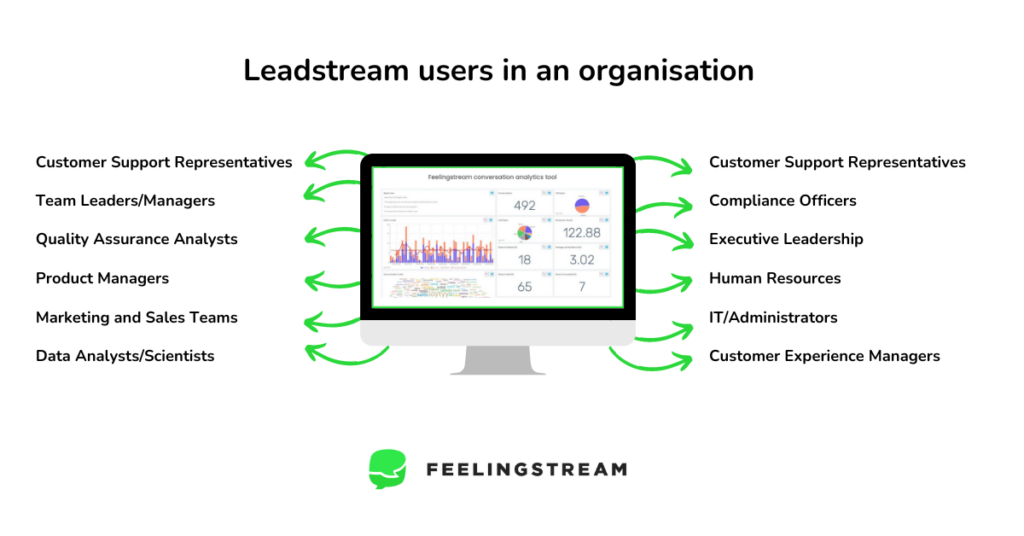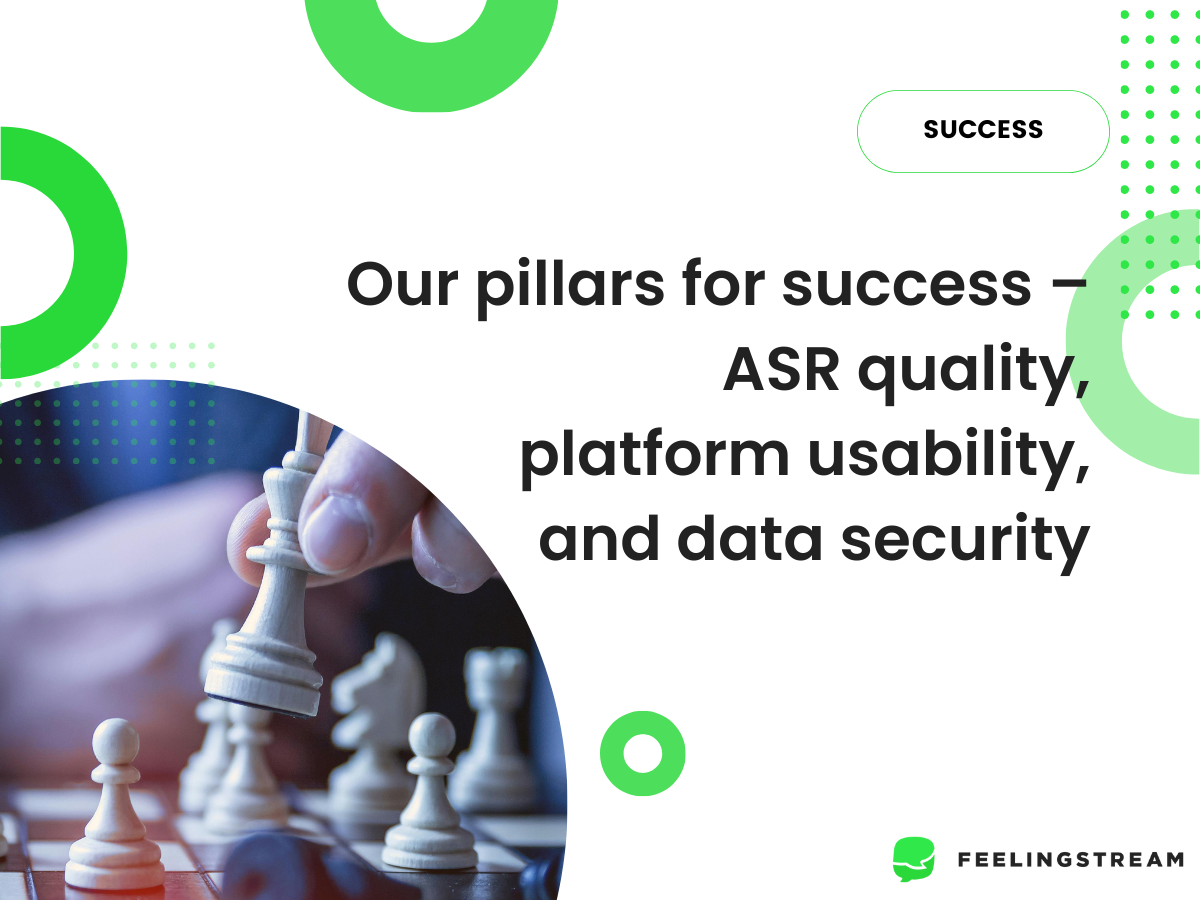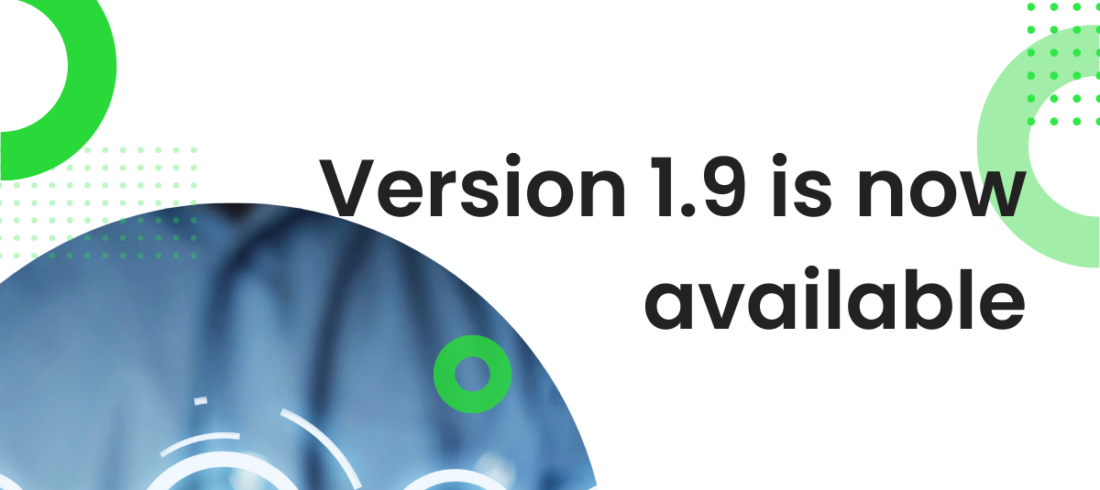Reflecting on the past few years, it is evident that we have remained steadfast in our commitment to enhancing our products and services, driven by specific goals tailored to meet the evolving needs of our customers. Feelingstream’s primary focus has been serving large enterprises, addressing critical concerns such as visibility into customer conversations, tool usability, ASR quality, and paramount security measures across all facets of our offerings.
As we delve into our progress over recent years and glimpse into the near future, it becomes apparent that our journey has been guided by a dedication to excellence in every aspect of our operations.
ASR quality is the base for call conversation analysis
When working with our customers on offering analysis of their phone calls, it is vital that the call quality is good enough to be transcribed. The ASR model must also be top-notch as this will make or break the analysis capabilities – good analysis is impossible without a good transcription.
In Feelingstream, we use our own ASR models specifically meant for transcribing phone calls. Our Automated Speech Recognition (ASR) model is the best in the market for transcribing customer service calls.
Additionally, we can also adapt them to the customer phone calls to ensure the highest quality of transcription. We have created great base models for various languages and work with our customers to offer them the best possible ASR services to ensure that they can really maximise the benefit from the conversation analysis.
Over the last years, we’ve refined our ASR processes, optimizing tools for sample data collection and introducing innovative techniques to elevate transcription quality.
Our customers have trusted us to transcribe more than 3.4 million hours of their phone call recordings in the past three years – giving them true business value via conversation analysis.
Usability of the Feelingstream applications – we want to give our users value with a good experience
The usability and user-friendliness of our platforms are highly important to us. Feelingstream does not create tools targeted at data scientists. We do not create high-level reports based on request. We give access and power to the users.
We aim to bring insights from customer conversations to all departments and teams within large organisations. The use cases and user personas who can benefit from our tools are so varied that we need to ensure the interfaces meet their needs.

For this reason, we are constantly looking into making the users’ experience easier. In the past few years, we have enhanced our views and options for analysis for all the event types that our omnichannel solution offers – the way the users can see and analyse calls, chats, emails, and feedback. We’ve improved query options, chart solutions, and the sharing of findings. We aim for any user to be capable of looking at single events, create ad hoc searches, and do long-term analysis, just as they see fit.
Using our player to listen to calls while scrolling through transcripts is a user-favorite – calls can be sped up or slowed down, the user can easily click through the audio or transcript to find what they’re looking for and only spend a fraction of the normal time reviewing calls for QA or other purposes.
In addition to working on our main user platform which is our conversation analytics tool, we are continuously improving our NLP and model-building tool, FS Text, to ensure that business users can discover the world of machine learning and model-building to classify their conversations as they wish for analysis.
Security – one of the most important factors in our business
We have talked about security quite a bit recently, make sure to check out the following blog posts:
- What is data security for Feelingstream?
- How can data security help you maximise the value of your customer conversations?
- Four steps of data masking to enable the entire company to analyse conversational data.
Security has been THE hot topic for us and our customers from the start. With AI regulations and GDPR, protecting the private information shared in conversations, considering consent, offering access on a need-only basis, being able to regulate access in various ways (user, event type, channel, time – you name it, really) – this is our bread and butter.
Anonymisation or masking PII in customer conversations has been a very large focus for us this last year – we have implemented a highly accurate system of combining named entity recognition (NER) tools, blacklisting and whitelisting with monitoring to ensure that the value of customer conversations can be gained with risks of PII use mitigated. We do not use any external tools for anonymization, everything is done by us and tailored based on customer needs. This means we can independently move from audio to anonymized transcriptions and then offer regulated access to users as the customer needs it.
We’ve been also hard at work to gain and now continue to be proud owners of the ISO/IEC 27001 certification. If this is a topic that is important to you too, read more about our security features from our dedicated security page.
What does the future hold for Feelingstream?
Everyone’s eyes have been turned to LLMs for a while. AI is all the rave. We’ve been keeping an eye on the situation, but as we’re all about security, we do not want to dive into anything headfirst when it comes to processing sensitive customer conversation data.
In the year to come, we will put our focus more closely on the business users’ needs, using LLMs and other new technologies. We are currently working and testing various solutions and use cases. Our aim is to offer automation options for customer service to ensure that our customers can offer a fast, smooth, and delightful customer service experience.
As machine learning and ease of use for model building is a crucial part of our services, wanting to offer actionable insights to users with a variety of backgrounds and not always technical expertise, we are also experimenting with various AI models and automation tools. We aim to give easy visibility and insights with minimal effort, meaning that we will be sticking to our roots of the user being able to control what and how they analyse, but bringing more technological aids to them.
As in the past, we see that our tools support cost-cutting, sales, and quality use cases, we will keep these in mind when creating new functionalities and services.
If you’re ready to embark on this journey with us, we invite you to connect with us and discover the future of conversational analytics.




